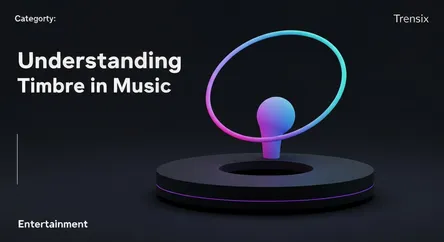Entertainment
Understanding Timbre in Music

Discover timbre, the unique quality that gives a sound its 'color'. Learn what makes a violin sound different from a trumpet and why it matters.
What is it?
Timbre (pronounced TAM-ber), often described as tone quality or tone color, is the characteristic that distinguishes different types of sound production. It's what allows a listener to identify a piano from a flute even when both are playing the same note at the same loudness. This unique sonic fingerprint is primarily determined by a sound's harmonic content—the series of overtones present above the fundamental frequency—and its dynamic envelope, which includes its attack, decay, sustain, and release (ADSR).
Why is it trending?
Interest in timbre is surging with the accessibility of digital music production. Artists and producers are no longer limited to traditional instruments; they now explore and create unique soundscapes by manipulating timbre with synthesizers, effects plugins, and advanced sampling techniques. This sonic exploration is a key driver in genres like electronic, experimental, and pop music. Furthermore, AI-powered music tools are increasingly sophisticated at analyzing and generating complex timbres, pushing the boundaries of sound design.
How does it affect people?
Timbre profoundly influences our emotional connection to music. The 'warmth' of a cello, the 'breathiness' of a vocal, or the 'sharpness' of a distorted guitar all evoke specific feelings and moods. It's the texture of sound that can make a song feel intimate, aggressive, or ethereal. For listeners, a greater awareness of timbre enhances the appreciation of musical arrangement and performance. For creators, it is a powerful tool used to craft a unique artistic identity and convey deep emotional narratives without words.